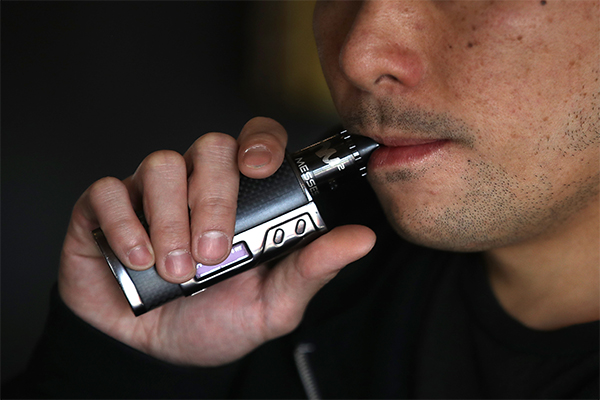
BAY RIDGE — When it comes to the national epidemic of teen vaping, Xaverian H.S., Bay Ridge, has taken a tough stance.
In January, the school said that the first time a student is caught vaping or with the paraphernalia it will suspend the student from school for two days and from extracurricular activities for two weeks, and will expel the student if he or she is caught a second time.
Deacon Kevin McCormack, the principal, has spoken with each grade about the dangers of vaping, and it’s a topic in health classes and guidance counseling sessions.
The danger of vaping is real. According to a Sept. 19 weekly report from the Center for Disease Control and Prevention, the number of people with a deadly vaping-related lung disease rose to 530 from 380 the week before (38 states and one U.S. territory report numbers). Officials have said half of those patients are under 25 years old and 16 percent are younger than 18. Nine deaths have been reported.
According to a recent Food and Drug Administration study, more than one in four high school students in 2019 say they have used e-cigarettes in the past 30 days.
Those statistics have prompted lawmakers to act. President Donald Trump announced earlier this month that the U.S. plans to ban the sales of most flavored e-cigarettes, and several days later, Gov. Andrew Cuomo announced a ban on flavored e-cigarettes in New York state that went into effect immediately.
In the Diocese of Brooklyn, the Program for the Development of Human Potential (PDHP) — an organization that provides substance abuse services to local Catholic elementary and high schools — has been warning teens about vaping for years. Its “Too Good” program includes lessons on resistance to substance abuse and to negative peer pressure.
Christa Codoluto, LMSW, PDHP’s Queens North Regional Coordinator, said students as young as 14 or 15 years old have severe respiratory illnesses after vaping for just a year or two. In addition, she has encountered cases where students are beginning to vape as early as the fifth grade because they get access to their older siblings’ devices.
Some reports show that students who vape are developing the lungs of a 70-year-old, Codoluto said.
One Juul pod is the equivalent of 20 cigarettes, she said. That is 200 puffs, whereas students had thought it was just the same as smoking one cigarette. According to PDHP, much is unknown about what is in the water vapor pods, noting that some of the chemicals are indecipherable under a microscope.
Xaverian senior Arianna Conti has experienced the effects of tobacco use personally, noting that her aunt suffered through lung cancer caused by smoking cigarettes. She says Xaverian’s tough policy has made a difference.

“Since the policy has been in place, it’s cut down on it a lot,” Conti said. “I remember in years past, there would be an assembly almost monthly trying to stop vaping, and no one would listen. Now, the policy has been implemented, and we see people get punished for it, so it’s a lot less and that’s a good thing.”
Victoria Vittorioso, another senior, has seen vaping cause Xaverian students to get sick and has seen how shocked her classmates have
become when they see the effects of vaping.
“When you see it happen to your friends, it’s just a change in mindset like, ‘It could be me,’” Vittorioso said. “Of course that’s a dire situation, but it is something that’s happening and it’s definitely seeing it happen to people around you.”
Theology teacher Brendan Moloney said moral decision-making that relates to vaping and other harmful habits is woven into the school’s religion classes.
“The kids need to know all of these ill effects,” Moloney said. “How does God call them? How does God want them to live? Can they promote that dignity?
“Everybody wants fulfillment in some way, shape and form,” he said. “It’s just that we as a school community, not just in our religion classes, but in the relationships we form with our kids are consistently identifying, ‘This is a harm that’s there. Vaping is a harm. We need to ask, ‘How are you going to look at it and say this isn’t for me. How are you going to tell your friends not to.’”
